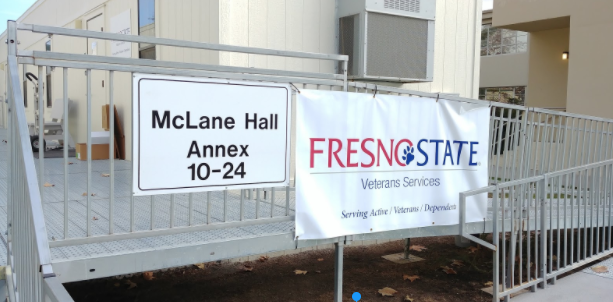While strolling along San Ramon Mall, I’ve noticed the growing number of temporary buildings there again. They harken memories of hideous structures that were there back in my undergrad and graduate days.
When I transferred to Fresno State from Fresno City College in 1975, San Ramon Avenue (it was still a street then, just blocked off with pipes with chains strung between them) was lined with one and two-storied buildings between Jackson and Maple avenues. They housed classrooms and faculty offices.
We students were told they were only supposed to be on campus for at most 10 years until permanent buildings were constructed. Several lasted for more than 30 years. Their surviving that long serves to illustrate the difficulty Fresno State had in getting needed buildings built.
Just east of Jackson Avenue on the north side of San Ramon Avenue stood a large two-storied wood frame structure that hosted a few classrooms and business faculty offices. That one lasted until Engineering East was built in the 1980s. Across the way was a one-story brown wood building, which was the home for the Recreation Administration department mostly. That one survived into the 1990s.
To the east of Rec Administration’s temporary home, next to the parking lot behind Jordan Agricultural Sciences, was another two-storied wood frame building which became notorious on several counts. It housed the English and Chicano Studies departments for many years.
In the early 1970s, then-University President Norman Baxter sent campus police to seize the department’s offices during a dispute with his administration. The cops famously padlocked the file cabinets in the department chair’s office and sealed the doors after removing the door knobs.
The other famous incident led to the building being condemned and finally demolished in the 1990s. An English instructor was standing in the department office upstairs when he suddenly plunged through the floor into an office below. The building was cleared and a hasty survey by building inspectors revealed tons of rot and mold. There was so much that the building was unsafe to occupy.
I’d occasionally have business at that building and it always made me nervous. The plywood of the second-story office floors and walkway would sag and ripple whenever you walked and the building itself would sway a little.
You had to wonder if a stiff breeze might finish it off. Towards the end of its life, the layers of plywood were visibly separating due to years of rain and dew. Few tears were shed when that building was finally bulldozed.
There were two temporary buildings near Agricultural Mechanics. They were both one story. One was finally removed and the other replaced with another “temporary” after it too became too dilapidated. The replacement lasted close to 10 years before it was torn down and replaced by grass.
Although most temporaries were located along San Ramon Avenue, there were other temporaries elsewhere on campus. There were several in a cluster near Peters Business and some more across Keats Avenue from the Laboratory School complex that served University High School until a permanent home was built in 2010.
The Bulldog Card office was housed in a stray trailer behind Family and Food Sciences for many years. After the temporaries along San Ramon Avenue were removed and the old street reconstructed into the pleasant walkway it is now, I was hopeful the era of flimsy buildings there was over.
I was heartened further by the disappearance of all the others. Removal equaled huge aesthetic improvement.
Then the “McLane Annex” appeared a few years ago. Hopefully, they won’t spawn another outbreak of “short term” temporary structures that end up staying for 20 or 30 years.




